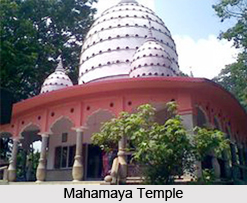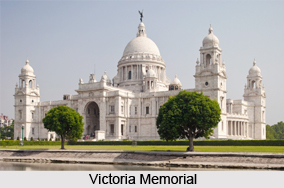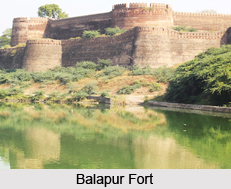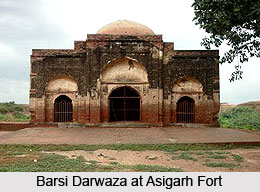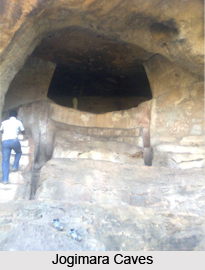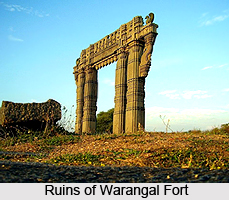 Forts in Andhra Pradesh can be attributed to the ancient rulers of the southern portion of the country, who had erected these marvellous historical monuments. Even today, the forts are well preserved and serve as beautiful tourist locales, being thronged by historians and travellers from India and also abroad. Warangal Fort, Bhongir Fort, Chandragiri Fort, Golconda Fort, Gandikota Fort, Kondapalli Fort, Kurnool Fort, Medak Fort, Naya Qila, Penukonda and Rachakonda Fort are some of the spectacular forts of this southern Indian state.
Forts in Andhra Pradesh can be attributed to the ancient rulers of the southern portion of the country, who had erected these marvellous historical monuments. Even today, the forts are well preserved and serve as beautiful tourist locales, being thronged by historians and travellers from India and also abroad. Warangal Fort, Bhongir Fort, Chandragiri Fort, Golconda Fort, Gandikota Fort, Kondapalli Fort, Kurnool Fort, Medak Fort, Naya Qila, Penukonda and Rachakonda Fort are some of the spectacular forts of this southern Indian state.
Warangal Fort
Warangal Fort exists in Andhra Pradesh since the 13th century though its exact period of establishment is clouded in mystery. However, historians and archaeologists have claimed that Ganapatideva had replaced the previous brick structure of the fort with stone and he had died during 1262. The square bastions, gateways and earthenware walls were added to the structure by Prataparudra and Rudramadevi. This indicates that Warangal Fort was constructed during the conclusion of the reign of the Kakatiyas.
Bhongir Fort
Located in the region of Bhongir in Nalgonda District in Hyderabad, Bhongir Fort was erected during the 10th century and is based on a large monolithic rock. Tribhuvanamalla Vikramaditya VI, a Chalukya king had built this fort and therefore the fort was also known as Tribhuvanagiri Fort, in his honour. It bears a unique egg-shaped structure equipped two gateways safeguarded by large rocks. So, the Bhongir Fort was impenetrable by invaders and enemies. Ponds, wells, trap doors, moat, etc are present here.
Chandragiri Fort
The fort of Chandragiri was constructed during the 11th century and is existent in Chandragiri near Tirupati. The Raja Mahal or Palace is an impressive part of the fort. The fort was annexed to Golkonda and was captured by the rulers of Mysore. Eventually, from the year 1792 onwards, the fort gradually slipped into oblivion. Presently the Raja Mahal Palace is an archaeological museum, and exhibits the features of Indo-Sarcenic architecture belonging to the age of Vijayanagara. Lime mortar, brick and stone were utilized in its construction.
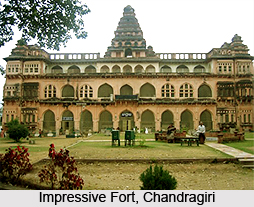 Golconda Fort
Golconda Fort
The Golconda Fort is also known as `Golla Konda` implying `shepherd`s hill` and used to be the official capital of the Golconda Sultanate. It is located at a distance of nearly 11 kms away from the western part of Hyderabad. It was erected by the Kakatiya rulers and its planning was inspired by that of the Kondapalli Fort which is close to Vijayawada around in 945 CE to 970 CE. Musunuri Nayaks had strengthened this fort after they defeated the troops of the Tughlaqs who were then occupying Warangal. Hope diamond, Kohinoor and other diamonds were stored here.
Kondapalli Fort
Kondapalli Fort is also recognised as `Kondapalli Quilla` and is situated in Krishna District near Vijayawada. This fort was established in 1360 by King Prolaya Vema Reddy of Kondavidu as a commercial centre and also a pleasure palace. Much later the British employed this fort as a military fortification, and they had erected a garrison near the fort. It possesses three entry gateways. The Archaeological Survey of India or the ASI has been entrusted the responsibility of renovating and conserving Kondapalli Fort.
Khammam Fort
Built in 950 AD by the kings of the Kakatiya Dynasty, the Khammam Fort has witnessed the reign of several kings and conquerors. The Qutb Shahi rulers invaded it prior to its occupation by Asaf Jahi rulers in the 17th century. The fort is present on the summit of a hill overlooking Khammam town. A beautiful fusion of Hindu and Islamic architectural style is observed in its construction. Numerous portions were added to Khammam Fort by the Qutb Shahi rulers.
Medak Fort
Existent in Medak District at a distance of 100 kms away from Hyderabad, Medak Fort was established during the 12th century, particularly under the regime of Pratapa Rudra, a Kakatiyan ruler. It was also known as `Methku Durgam` which means `cooked rice` in Telugu language. The Kakatiya kings utilized this fort as a military commandment and later Qutb Shahis used it for similar purposes. The Medak Fort bears a significant historical importance and the Qutb Shahis had built a mosque inside its premises.
Naya Qila
Naya Qila is a part of the renowned Golconda Fort of Hyderabad which was constructed during 1656 AD by Sultan Abdullah Qutb Shah as protection against the armies of Mughals. The walls of the exterior fort of Naya Qila are embedded with unique figures of animals, made with the aide of stucco and stone. Mustafa Khan had designed and created Naya Qila and he was the same person who planned the Toli Masjid and Mecca Masjid. He was the architect of the Qutb Shahi Sultans.
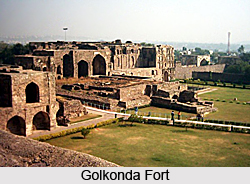 Rachakonda Fort
Rachakonda Fort
Rachakonda Fort was built by the 14th century AD by Recherla Singama Nayak who had founded a new group of rulers who had earlier worked for the kings of the Kakatiya Dynasty, as their military commanders since the 12th century. Hindu architectural characteristics are existent in every nook and corner of the Rachakonda Fort, and closely followed Viswakarma`s Vastu Shastra, regarding Hindu architecture. Under the rule of the Velamas, the fort slipped into the administrative control of the Bahamani Sultanate during 1433 AD.
Other Forts of Andhra Pradesh
The state of Andhra Pradesh is dotted with many other impressive historical forts created by the emperors of many powerful dynasties. They consist of Devarakonda Fort, Elgandal Fort, Udayagiri Fort, Gurramkonda Fort, Kondavidu Fort, Naganur Fort and others.
